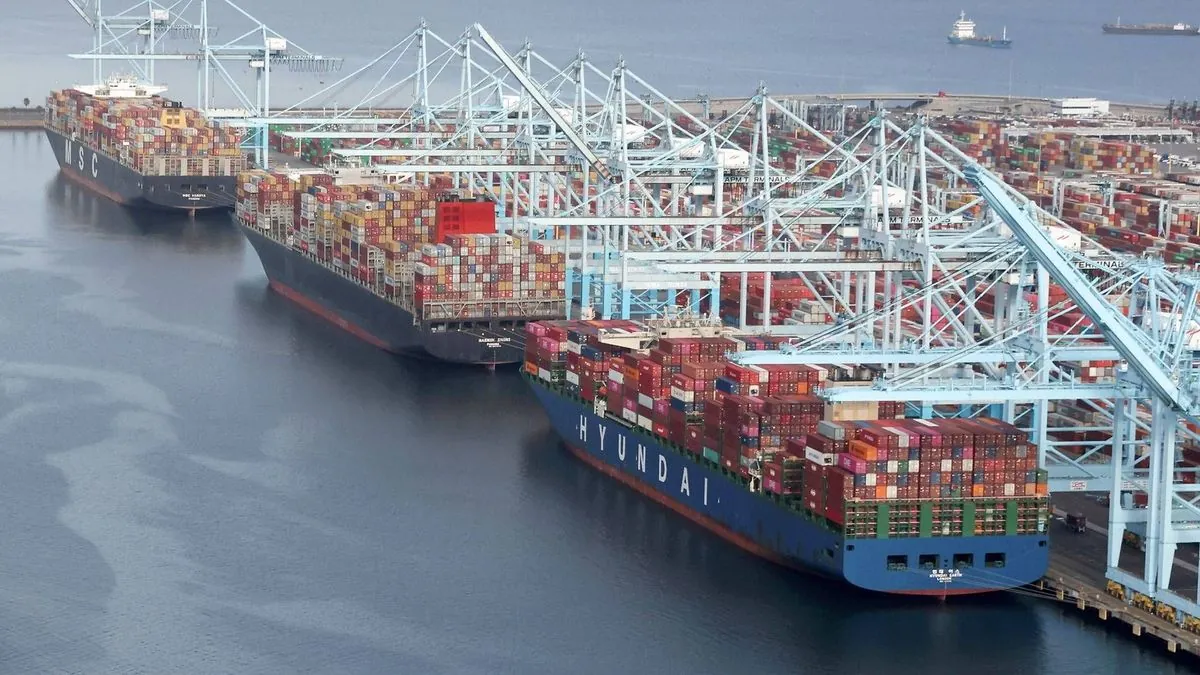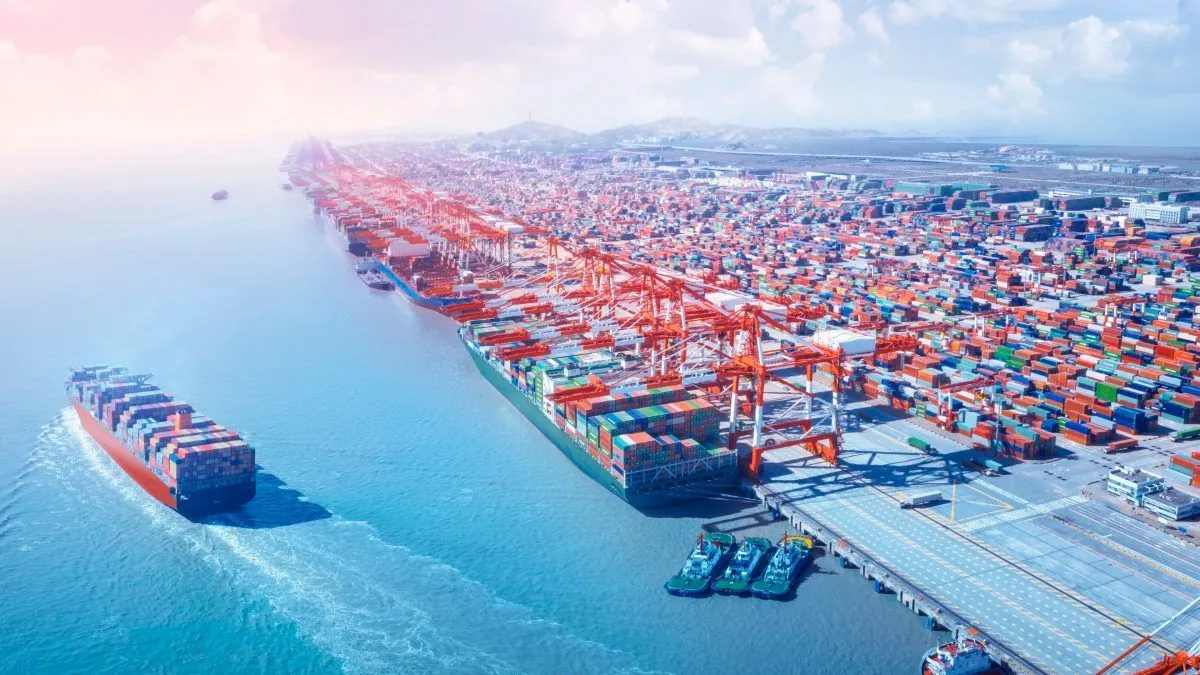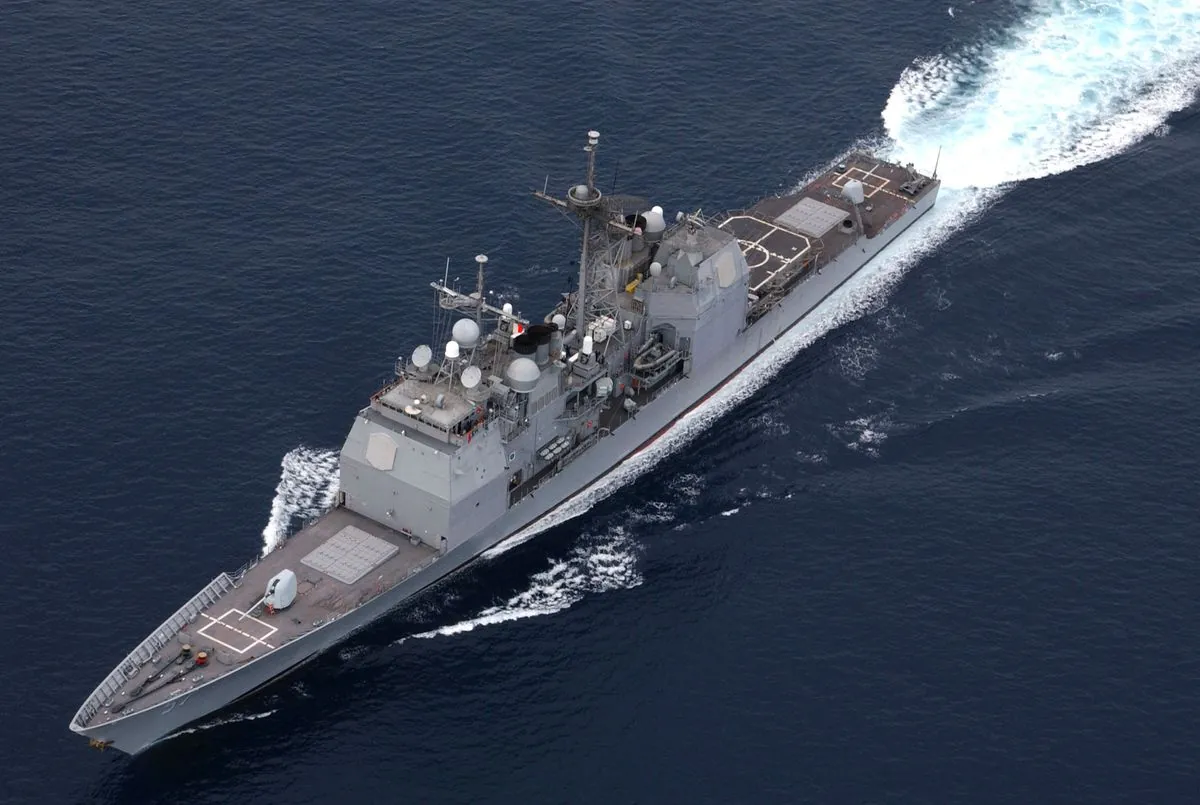Major U.S. Port Strike Enters Third Day, Causing Vessel Backlog
A significant dockworker strike at East and Gulf Coast ports enters its third day, causing a backlog of at least 45 container vessels. The White House urges port employers to increase their pay offer as negotiations stall.

As of October 3, 2024, a substantial dockworker strike along the East and Gulf Coasts of the United States has entered its third day, resulting in a growing backlog of container vessels outside major ports. This labor action, initiated by the International Longshoremen's Association (ILA), marks the most significant port worker stoppage since 1977.
At least 45 container ships are currently anchored outside the affected ports, unable to unload their cargo. This number has increased dramatically from just three vessels before the strike commenced on October 1. Jena Santoro of Everstream Analytics warns that the vessel backlog could potentially double by the end of the week, potentially leading to weeks or even months of congestion.
The strike impacts 36 ports, including major hubs such as New York, Baltimore, and Houston. These ports handle a diverse range of containerized goods, from perishables to automotive parts. The Port of New York and New Jersey, the largest on the East Coast, and the Port of Houston, which handles the most foreign tonnage in the U.S., are among those affected.

The United States Maritime Alliance (USMX), representing port employers, has signaled openness to new negotiations. However, no talks are currently scheduled. The White House is exerting pressure on employers to increase their pay offer, citing the shipping industry's substantial profits since the COVID-19 pandemic, which caused significant disruptions to global supply chains in 2020-2021.
The ILA, founded in 1892, is seeking a substantial pay raise and commitments to halt port automation projects, which they fear could eliminate jobs. The first automated container terminal in the U.S. opened in 1993 in Norfolk, Virginia, highlighting the ongoing tension between technological advancement and job security in the industry.
"We cannot agree to preconditions to return to bargaining, but we remain committed to bargaining in good faith to address the ILA's demands and USMX's concerns."
The National Retail Federation, along with 272 other trade associations, has called on the Biden administration to intervene, citing potential "devastating consequences" for the economy. However, the administration has repeatedly stated it will not use federal powers to halt the strike, despite the authority granted by the Taft-Hartley Act of 1947.
As the situation unfolds, some vessels may consider alternative routes, such as sailing to West Coast ports via the Panama Canal, which opened in 1914. However, this would significantly increase costs and delivery times. The Port of Los Angeles, the busiest container port in North America, could see increased traffic as a result.
The strike's impact on consumer prices is not expected to be immediate, as companies had accelerated shipments of key goods in recent months. However, a prolonged stoppage could eventually affect prices, with food costs likely to react first according to economists at Morgan Stanley.
As the maritime industry grapples with this challenge, it's worth noting that container ship sizes have quadrupled in the past 20 years, with the largest vessels now capable of carrying over 20,000 TEUs (Twenty-foot Equivalent Units). This increased capacity has transformed global trade but also heightened the stakes of port disruptions.
The ongoing situation underscores the critical role of ports in the U.S. economy and the complex interplay between labor rights, technological advancement, and global trade dynamics.


































